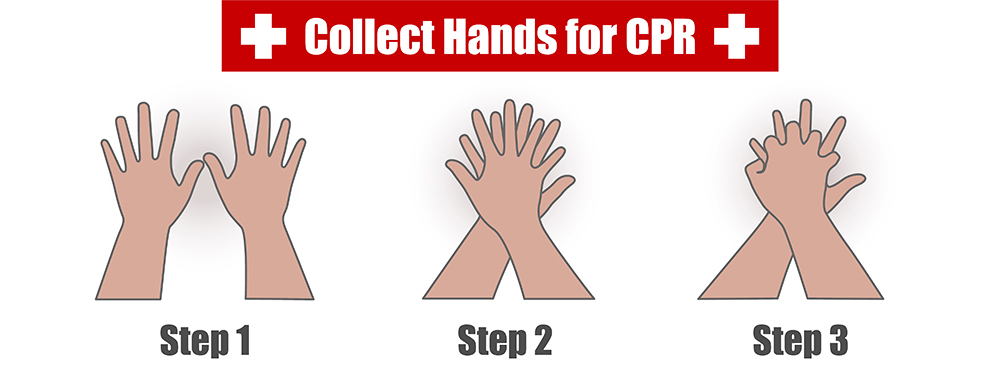The importance of hands
Hands Are Our Tools: Grasping The Importance of Our Hands
Our hands are one of the most versatile parts of our body. They can be tender and accurate enough to paint a picture, thread a needle, or play the harp. They can also be strong and powerful enough to swing an axe, move heavy objects, or clean floors. Our hands are also two of the most important tools we have. We use them in almost every aspect of our daily lives, and it’s important to keep them safe.
Keep in mind that your hands are also fearless. They will go to any place you send them and will act only as wisely as you want them. It’s a good thing to keep in mind where you put your hands and take proper care of the only two hands you’ll ever have. Here are some helpful hints to keep your hands safe and working properly.
A Little Foresight Can go a Long Way
Cuts and scrapes may not be a serious issue, but it can affect your productivity if you have to stop working to bandage a small scrape or cut. One of the best ways to do this is to take a proactive approach. Look at the area your hands will be working in and make sure there is nothing that can harm your hands. A good example would be if you were moving an object. Check to see if the doorways and aisles are wide enough to move through safely before lifting. You should also check if there is proper hand clearance when setting down the object.
In a Pinch
We’ve all been in a rush. We know the feeling of approaching deadlines and the stress of learning new things quickly. When we feel that kind of pressure, it can become tempting to cut corners.
Sometimes new employees are shoved into working with equipment without getting proper training and don’t realize some of the dangers when using the equipment. Veteran workers also get comfortable and skip procedures, which can lead to pinching your fingers or hand in machinery.
Small pinches can happen at home and they’re more of a nuisance than anything, but getting pinched while operating machinery can lead to severed fingers or broken bones. Make sure to have all safety guards in place, a clean area, and better attention to your hand positioning.
Make sure to have all safety guards in place, a clean area, and better attention to your hand positioning.
Rings of Doom
There are many jokes about how things were great for somebody until they put on a wedding ring, and that’s when the troubles began. Those kinds of jokes may not be far from the truth when it comes to our jobs.
Wearing a wedding ring or other types of hand jewelry can put your fingers in danger by making it easy for your hands to catch on machinery and other objects, which could result in injuries. If it isn’t an option to remove the jewelry, be sure to wear proper protective equipment like gloves to help prevent those items from interfering with your job.
Sometimes it’s the little things that we overlook that have major consequences. Your hands are no different. Such intricate and important tools shouldn’t be taken for granted. There are many little things you can do to keep your hands safe that don’t interfere with your day. Give yourself a hand and make sure they’re protected.
awareness careers caution equipment fingers gloves hand industrial job protection rings safety
Jared Cole
Previous Post Jobs After Jail
Next Post You Make Me Want to Shout! Calming Down at Work
Related Posts
At Work Career Advancement Inspiration and Motivation
Getting Your Work Noticed in 2023
By Asia Johnson on Thursday, January 5, 2023
At Work Career Options
Helping First-Generation Professionals Succeed in the Workplace
By Asia Johnson on Tuesday, November 29, 2022
At Work Events
Career Advice from Trick-or-Treaters
By Asia Johnson on Tuesday, October 25, 2022
At Work Teamwork
Career Lessons Learned from Football
By Asia Johnson on Tuesday, September 20, 2022
At Work Career Advancement
Celebrate National Tradesmen Day!
By Asia Johnson on Thursday, September 15, 2022
At Work New Job Tips
Tackling New Job Nerves
By Asia Johnson on Tuesday, August 30, 2022
At Work The Daily Grind
Career Lessons from Music Genres
By Asia Johnson on Tuesday, July 26, 2022
At Work Work/Life Balance
Managing Grief and Work
By Asia Johnson on Wednesday, July 20, 2022
At Work
5 Email Management Tips in the Workplace
By Asia Johnson on Tuesday, July 5, 2022
Importance of hands - Church News
Archives
By Church News Archives
Archives
By Church News Archives
Looked at objectively, they seem quite unremarkable, really. Just four fingers and a thumb, with a similar set at the end of the other arm. What they do basically is grasp, touch and hold. But what a world of meaning the hand has, in both our spiritual and daily life.
Both the brain and the soul have claim upon the work of the hand. But we have to look to our language, and to scriptures, to find out just how important those connections are.Hands make things. "But now, O Lord, thou art our father; we are the clay, and thou our potter; and we all are the work of thy hand." (Isaiah 64:8.)
Hands possess things. "Know ye not that ye are in the hands of God?" asked the ancient prophet Mormon. (Mormon 5:24.)
Hands control things. ". . . after much tribulation the Lord did hear my cries, and did answer my prayers, and has made me an instrument in his hands . . ." (Mosiah 23:9.)
. ." (Mosiah 23:9.)
Hands comfort. "And how merciful is our God unto us, for he remembereth the house of Israel, both roots and branches; and he stretches forth his hands unto them all the day long. . . ." (Jacob 6:4.)
Hands promise. "Neglect not the gift that is in thee, which was given thee by prophecy, with the laying on of the hands of the presbytery." (I. Tim. 4:14.)
Hands bless. "Every member of the church of Christ having children is to bring them unto the elders before the church, who are to lay their hands upon them in the name of Jesus Christ, and bless them in his name." (D&C 20:70.)
Hands heal. "And when Jesus saw her, he called her to him, and said unto her, Woman, thou are loosed from thine infirmity. And he laid his hands on her: and immediately she was made straight, and glorified God." (Luke 13:12-13.)
Hands confer authority. "We believe that a man must be called of God, by prophecy, and by the laying on of hands by those who are in authority to preach the Gospel and administer in the ordinances thereof. " (Fifth Article of Faith.)
" (Fifth Article of Faith.)
A nd much more. We refer to our hands constantly in our daily speech. We talk about responsibility being put in our hands. When we like what someone has done, we give him a hand of applause. We raise our hands in support. We look for hands of friendship, seal our agreements and greet each other with a handshake. We put our hands on each others' shoulders in support, and extend an open hand to people who need our assistance.
We look for a handhold when we start a new project or job. We hold our hands over our hearts in patriotic display, fold them in prayer, salute with them, hold them up to stop someone or to motion them to draw closer. We wave our hands in greeting and shake them in dismissal.
There's a great difference between going hand-in-hand and being told to keep our hands off. We can join hands, or not lift a hand. We can throw up our hands or clap our hands. Whether something is in hand or out of hand matters greatly.
What we do with our hands is pretty much up to us, but there is no doubt what the Lord expects of this great marriage of mind and body. "Who shall ascend into the hill of the Lord? or who shall stand in his holy place?
"Who shall ascend into the hill of the Lord? or who shall stand in his holy place?
"He that hath clean hands, and a pure heart; who hath not lifted up his soul unto vanity, nor sworn deceitfully." (Psalms 24:3-4.)
Hands play an important role in some of the most important religious images, three of which encompass death, the Resurrection and the Restoration. First, who can not visualize the scene: "When Pilate saw that he could prevail nothing, but that rather a tumult was made, he took water, and washed his hands before the multitude, saying, I am innocent of the blood of this just person: see ye to it." (Matt. 27:24.)
Another is the image of the doomed Stephen, soon to be stoned to death, "being full of the Holy Ghost, looked up stedfastly into heaven, and saw the glory of God, and Jesus, standing on the right hand of God." (Acts 7:55.)
A third is the image conjured by the words of Joseph Smith, after he and Oliver Cowdery prayed about baptism: "While we were thus employed, praying and calling upon the Lord, a messenger from heaven descended in a cloud of light, and having laid his hands upon us, he ordained us. . . ." With that touch of the hands the great work of the Restoration began.
. . ." With that touch of the hands the great work of the Restoration began.
Finally, we have the great testimony of the Lord to Joseph Smith and Oliver Cowdery, with instructions for us all: "Behold the wounds which pierced my side, and also the prints of the nails in my hands and feet; be faithful, keep my commandments, and ye shall inherit the kingdom of heaven." (D&C 6:37.)
Newsletters
Subscribe for free and get daily or weekly updates straight to your inbox
Church News Today
The three things you need to know everyday
This Week in Church News
Highlights from the last week to keep you informed
Email address
The importance of handwashing
Human health begins with clean hands. It is known that 80% of all infectious diseases are transmitted by contact. Dirty or poorly washed hands can cause flu, SARS, hepatitis, dysentery and a number of other dangerous viral diseases, intestinal disorders and allergies, so regular and proper hand washing is one of the most important aspects of personal hygiene.
Dirty or poorly washed hands can cause flu, SARS, hepatitis, dysentery and a number of other dangerous viral diseases, intestinal disorders and allergies, so regular and proper hand washing is one of the most important aspects of personal hygiene.
Did you know that:
- our hands can contain from 2 million to 140 million bacteria from fingertips to elbows; nine0008
- Bacteria and germs on hands can stay alive for up to 3 hours;
- Wet hands transmit 1000 times more bacteria than dry hands;
- Half of men and 25% of women do not wash their hands after going to the toilet;
- millions of bacteria are hiding under a watch or a bracelet on a hand, and under a wedding ring there can be more bacteria than people in all of Europe!
Scientists have found that there are much more microbes and bacteria on women's hands than on men's hands. The difference in the amount of pathogenic microflora on the hands is explained by different acidity of the skin (it is lower in women), different sweating and hormonal levels, as well as the fact that men and women use different detergents and cosmetics - for example, women often use hand cream and products for washing and cleaning.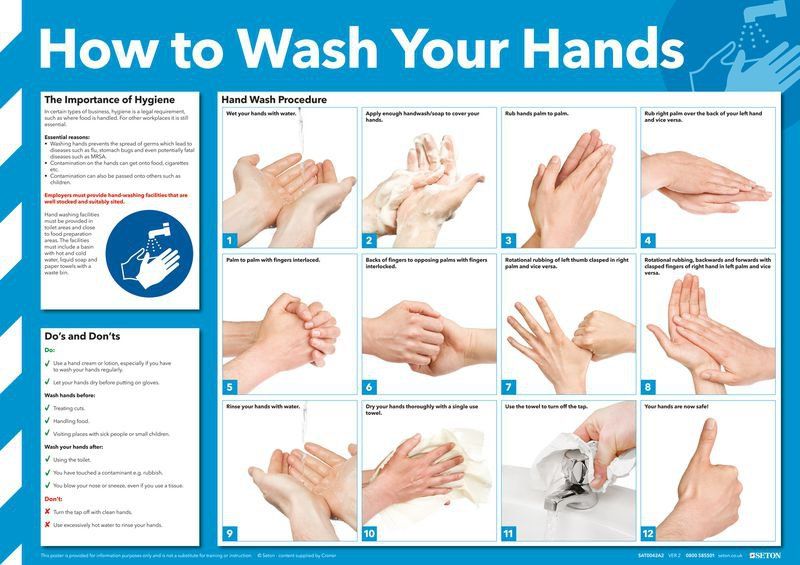 nine0003
nine0003
Those who do manual labor have much cleaner hands than those of office workers, and in the ranking of the most germ-infected household items, the handset (including a mobile phone), a desk, a computer keyboard and mouse are in the lead - just what is used in the office.
Respiratory infections, bacteria and viruses that cause gastrointestinal distress and other infectious diseases are very often passed from one person to another through hands and surfaces of objects that we touch. The simplest yet most effective way to fight germs is to keep your hands clean. nine0003
It is very important to wash your hands thoroughly with soap and water before eating, before feeding your baby and before preparing food. pathogenic microbes from dirty hands can enter the human body with food. After touching raw meat or fish, and after handling raw food, it is also necessary to wash your hands thoroughly, because. On such products, microbes and viruses multiply especially quickly.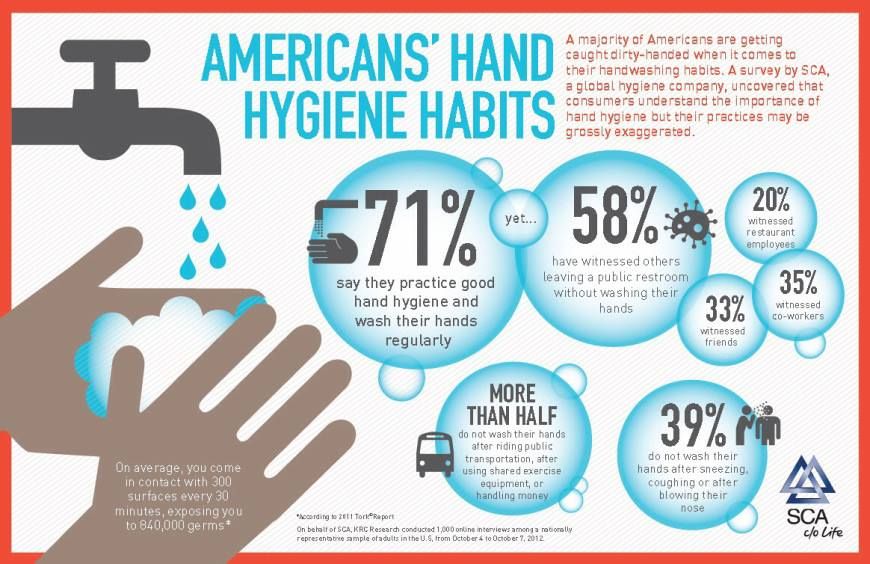 It is imperative to wash your hands after changing your baby's diaper or nappies, as well as after using the toilet: it is known that after using the toilet, the number of bacteria on the fingers doubles! nine0003
It is imperative to wash your hands after changing your baby's diaper or nappies, as well as after using the toilet: it is known that after using the toilet, the number of bacteria on the fingers doubles! nine0003
Hands should be washed especially thoroughly after taking out the trash, after touching money, after contact with animals, dirty shoes or a dirty rag, and whenever the hands look dirty or smelly.
Remember to wash your hands with soap for at least 15-30 seconds, then rinse off the soap and dry your hands with a clean towel or dry them with warm air. Washing your hands regularly with soap helps to remove a significant amount of bacteria from them. nine0003
Importance of hand hygiene in food production
The benefits of hand hygiene, both in the household and in food production, are clear! This is a reduction in the risk of contamination of products, personnel and the working environment. The importance of hand hygiene in preventing the transmission of various infections was noted by many scientists in their writings as early as the mid-19th century. Since 2008, the world has been celebrating International Handwashing Day!
Since 2008, the world has been celebrating International Handwashing Day!
In the food industry, the link between poor hand hygiene and the spread of infectious diseases is also well understood, and the pathways of contamination through various types of surfaces, air masses, liquids and workers in the enterprise are also well understood. The need for hand washing equipment in the food industry is enshrined in various industry hygiene standards, regulations of the sanitary and epidemiological control and labor protection departments. They provide for hygienic treatment of hands with water, soap, followed by drying. The enterprises themselves further choose whether they will have a conventional sink for washing hands with cold and hot water, drying with woven or paper towels, or a state-of-the-art automatic hygiene station with a sanitary lock? nine0003
With the worldwide spread of the coronavirus infection COVID-19, not only hand washing, but also hand disinfection is coming to the fore. Accordingly, many equipment manufacturers are considering automating these processes, in which spray technology plays a key role.
Accordingly, many equipment manufacturers are considering automating these processes, in which spray technology plays a key role.
Hand washing in food production
The main task of hand washing is to prevent cross microbiological contamination of raw materials, food products and equipment, which in the food industry can lead to contamination of finished products and their rejection. Here it is precisely the hand washing nozzles that can hardly be used! Typically, in automatic hand washers, a vortex flow of hand washing solution is forced into each compartment where a hand is placed. The washing cycle lasts 10-12 seconds. nine0003
It is worth adding that the design of the hand washing station, in addition to its main purpose, should minimize not only the contamination of the person himself (clothes, other parts of the body), but also the room in which hand washing takes place.
British scientists at the University of Bristol have conducted a number of large studies on hand hygiene, including attempting to compare washing performance in automatic hand washing systems with standard hospital protocol washing under a tap.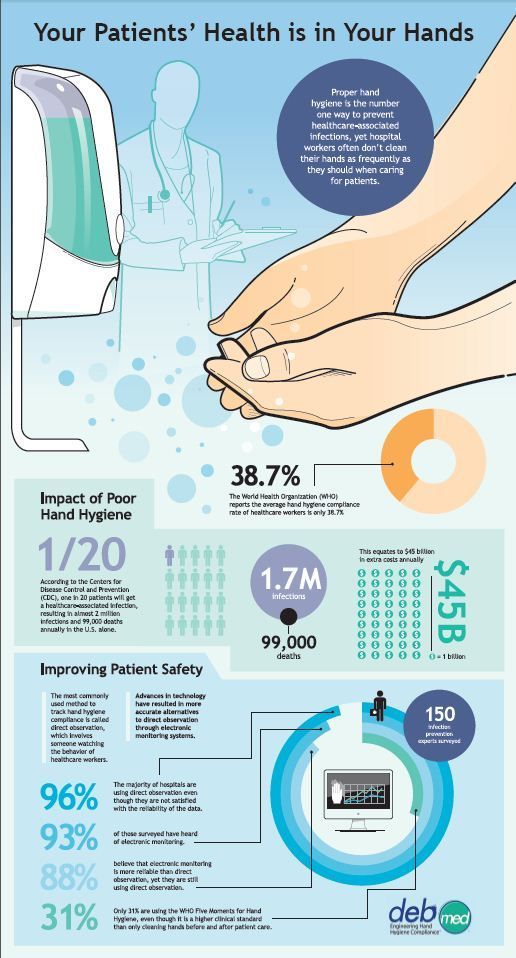 nine0003
nine0003
Here it is worth making a small digression on the quantitative values of the efficiency measurements (that is, how many bacteria were neutralized as a result of washing). In microbiology, when calculating the magnitude of the change in the number of cells, a logarithmic scale is used. In this way, large numbers, such as the number of cells killed in a sanitizer test or hand washing, are converted into smaller numbers that are easier to work with.
A number of true mathematical statements showing such patterns are presented below. nine0003
1 log reduction = 90% reduction
2 log reduction = 99% reduction
3 log reduction = 99.9% reduction
4 log reduction = 99.99% reduction
5 log reduction = 99.999% reduction
6 log reduction = 99.9999% reduction.
A test by British scientists showed that a 30-second hand wash under a tap reduced the number of marker bacteria pre-applied to the hands of volunteers by 2.42 log. Automatic washers showed a reduction of 2.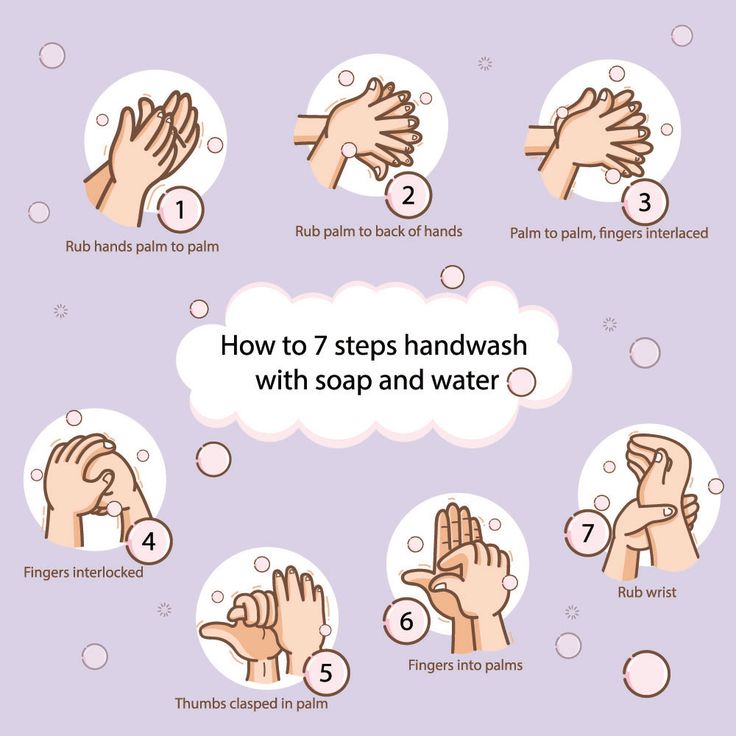 67 logs, which can be considered a comparable result! nine0003
67 logs, which can be considered a comparable result! nine0003
By the way, both hand washing techniques showed an increase in the number of bacteria on a person: sleeves of clothes, some parts of the body (automatic washing is still less), which could well come into contact with food in the workplace.
What are the most effective hand drying methods?
Scientific research has also proven the importance of hand drying in the process of hand hygiene. Wet hands carry thousands of times more germs than dry hands. However, scientists are still arguing about the effectiveness of different approaches to drying hands. The same scientists from Bristol (Great Britain) tried to find out the origin and Airborne contamination Drying hands by various methods: paper towels, warm air and automatic air knife dryer.
The results showed practically no significant difference between the above drying methods in terms of the formation of microbial aerosols in the surrounding atmosphere.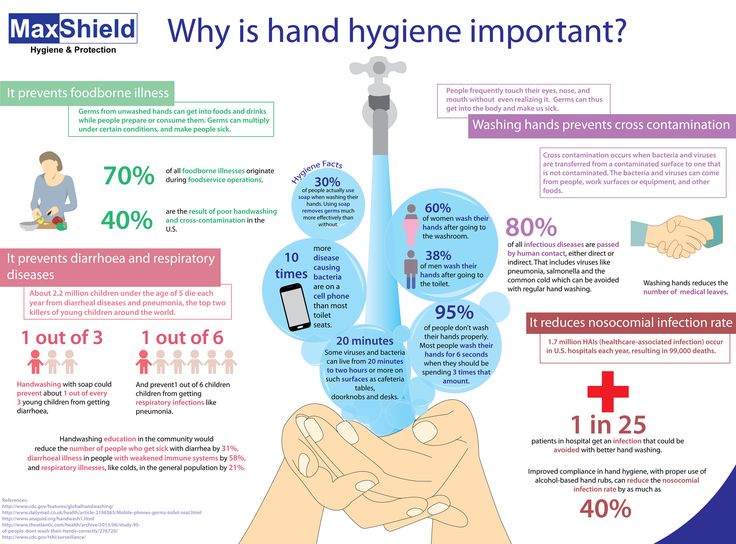 Very low levels of airborne microbes have been found, which is very good for food production! However, droplet contamination was much more significant for air knives than when wiping hands and drying them with paper towels. nine0003
Very low levels of airborne microbes have been found, which is very good for food production! However, droplet contamination was much more significant for air knives than when wiping hands and drying them with paper towels. nine0003
Hand disinfection with various types of sanitizers
The process of disinfection (decontamination) consists in applying a chemical substance (antiseptic) to the hands that has an antimicrobial effect. In the food industry, the choice of hand sanitizer is very limited. Naturally, it should not be toxic or irritating to the hands, and at the same time, it should act on a wide range of microorganisms. Among hand sanitizers, the most common substances are such types as chlorhexidine, quaternary ammonium compounds, iodophors, triclosan, alcohol solutions. Recently, especially during the coronavirus pandemic, the number of types of disinfectants on the market has greatly increased, and the forms of their release (gels, sprays, foams, wipes) have become diverse.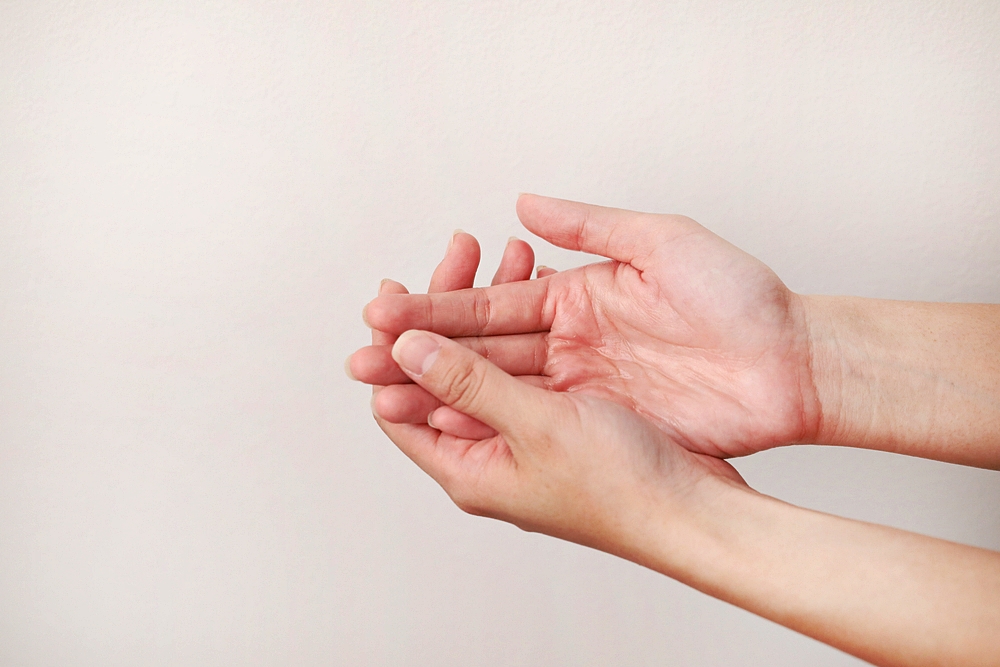 nine0003
nine0003
Alcohol-based hand sanitizers are effective against some gram-positive bacteria, including pathogens such as MRSA (methicillin-resistant Staphylococcus aureus), and a wide range of gram-negative bacteria. Applying 60%-80% alcohol solutions (ethyl or isopropyl) to the hands is quite effective in reducing the level of microorganisms on the surface of the hands. But alcohol has very little residual effect and the use of alcohol disinfectant alone is not suitable for removing contaminants. nine0003
Alcohol-based hand sanitizers are considered by many to be unsuitable for fighting spore-forming, non-enveloped viruses, there is debate about the benefits of alcohol-based skin care products, and alcohol-based hand sanitizers are religiously prohibited in some countries. One way or another, the need for alternatives to alcohol disinfectants is long overdue.
The addition of nanosilver-containing polymeric materials to an ethanol carrier has been proven to have a long-term antimicrobial effect on human skin..jpg) Nanosilver ions eliminate bacteria that are resistant to antibiotics! But due to insufficient knowledge of the side effects of such materials, it cannot be said that such disinfectant solutions are absolutely safe for humans. nine0003
Nanosilver ions eliminate bacteria that are resistant to antibiotics! But due to insufficient knowledge of the side effects of such materials, it cannot be said that such disinfectant solutions are absolutely safe for humans. nine0003
Innovative hand hygiene products such as Byotrol, which consist of polysiloxane polymer-based biocides, may have more practical applications.
Use of gloves as a way to protect hands and products from microorganisms
The COVID-19 pandemic has significantly changed the way people wear gloves to protect hands from viruses and contamination. In the food industry, this trend has been on the rise for a long time. After all, there, in addition to the hygienic component, gloves protect a person from hot, cold or harmful substances, they can be used as a barrier to protect the worker's small wounds, or for the convenience of a particular worker in a particular technical process. nine0003
During the studies already mentioned above, scientists from the UK analyzed more than 100 smears that were taken from unprotected hands and from hands after wearing gloves.